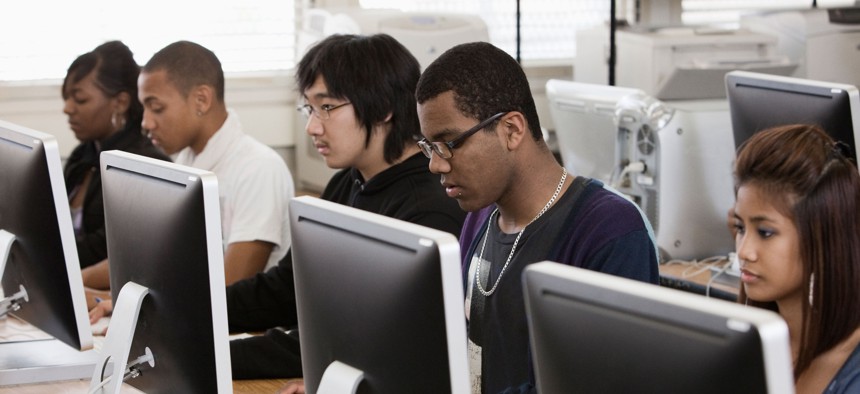Policy
After initially shunning artificial intelligence, NYC schools partner with Microsoft on AI teaching assistant
New York City schools are hoping to implement the AI assistant in every classroom.

The AI teaching assistant has been used in three high school computer science classes. Hill Street Studios/Getty Images
The New York City Department of Education has partnered with Microsoft to create an artificial intelligence-powered teaching assistant intended to answer students’ questions and offer them personalized, real-time feedback in city schools.
The teaching assistant, which has so far been piloted in three high school computer science courses, was built on Azure OpenAI Service – a platform that offers coding and language AI models like ChatGPT that can be fine-tuned to meet an organization or individual’s specific needs.
A spokesperson for the Department of Education said the plan is to launch an additional pilot round this fall focusing on high school math classes in approximately 15 schools. How quickly the program will expand from there will depend on the results of the pilot, they said.
In a Q&A published on Microsoft Source Thursday morning, Zeeshan Anwar, the education department’s chief product officer, and Tara Carrozza, director of digital learning initiatives, said that the teaching assistant was largely built with data from a cloud-based platform created by the education department and Microsoft during the COVID-19 pandemic. Their goal, according to Anwar, is to implement the technology in every city classroom. The tool will also provide data for educators similar to activity reports, on how students use the teaching assistant, according to the education department.
The New York City Public School district has rapidly changed its stance on the use of AI in classrooms over the past year. When fears about the potential misuse of a new artificial intelligence-powered chatbot called ChatGPT began sweeping the country, the education department blocked access to the program on education department devices and networks in early January, citing concerns about its impact on student learning, cheating and the safety and accuracy of content.
But it didn’t take long for the department to have a change of heart. In an op-ed published by Chalkbeat New York in May, schools Chancellor David Banks acknowledged that the district moved too quickly in its decision to ban ChatGPT. Doing so, he said, “overlooked the potential of generative AI” to support students and educators and “the reality that our students are participating in and will work in a world where understanding generative AI is crucial.”
“Eventually we just realized that technology is not something we can hide from students,” Anwar told Microsoft Source. “You need to embrace it, introduce it in a controlled fashion. So we said, ‘OK, we have a data foundation. ChatGPT and OpenAI are here. Let’s work with Microsoft to bring this into the classroom.’”
Carrozza said equity of access and opportunity is ultimately at the heart of the city’s embrace of AI.
“Our mission is for students to graduate on a pathway to a rewarding career and long-term economic security, equipped to be a positive force for change,” Carrozza said. “Our kids need to be exposed to these tools, to be fluent in them. If we are not using AI in education, we’re putting our students at risk of being behind.”
This post has been updated with comment from the city Department of Education.
NEXT STORY: New York looks at options for state work authorization for asylum-seekers

